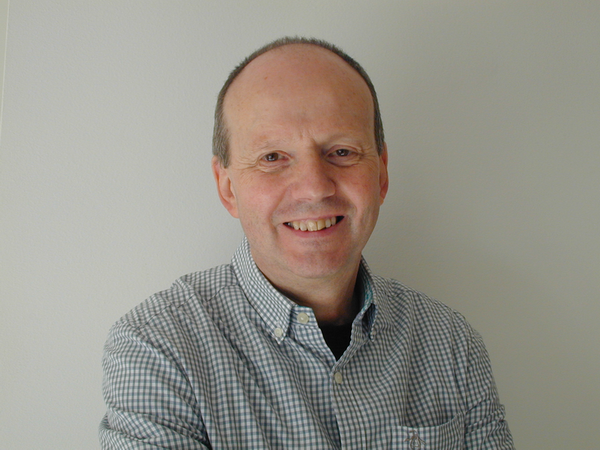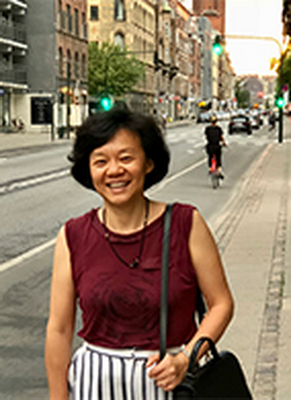检测到您当前使用浏览器版本过于老旧,会导致无法正常浏览网站;请您使用电脑里的其他浏览器如:360、QQ、搜狗浏览器的极速模式浏览,或者使用谷歌、火狐等浏览器。
 下载Firefox
下载Firefox
检测到您当前使用浏览器版本过于老旧,会导致无法正常浏览网站;请您使用电脑里的其他浏览器如:360、QQ、搜狗浏览器的极速模式浏览,或者使用谷歌、火狐等浏览器。
 下载Firefox
下载Firefox
生命科学学院2018年度秋季学期学术系列讲座
题目:Defining how problematic DNA replication impacts on chromosome segregation
讲座人:Ian D. Hickson, PhD FMedSci FRS,
Director of the DNRF Center for Chromosome Stability, and Professor of Molecular Aging,
Department of Cellular and Molecular Medicine, University of Copenhagen, Denmark
时间:2018年10月26日(星期五),13:00-15:00
地点:生命科学学院邓祐才报告厅
主持人:徐冬一

Ultra-fine bridges (UFBs) are thin threads of DNA that connect the separating sister DNA masses in anaphase. They cannot be stained with DNA dyes and do not contain histones, making their detection problematic and dependent on immunofluorescence for associated proteins such as PICH or BLM. Nevertheless, they are very abundant, and are a feature of all anaphases. UFBs arise from specific loci that are characterized by the unusual sequence or structure: most notably, centromeres, the rDNA, telomeres and common fragile sites (CFSs). We are conducting a detailed analysis of two aspects of UFB biology: modeling the association of proteins to UFBs in vitro using optical tweezers, and investigating how unresolved UFBs affect cell division. In addition, through analysis of the underlying basis of UFB formation in human cells, we identified that CFSs and telomeres are still undergoing DNA synthesis in early mitosis in a process we term MiDAS. MiDAS depends upon a subset of homologous recombination factors, such as RAD52, but not RAD51/BRCA2, and appears to be a form of break-induced DNA replication. Inhibition of MiDAS leads to major chromosome segregation abnormalities. The latest progress on these projects will be presented.
Further reading:
1. Chan, K-L., North, P.S. and Hickson, I.D. (2007) BLM is required for faithful chromosome segregation and its localization defines a class of ultra-fine anaphase bridges. EMBO J., 26, 3397-3409.
2. Chan, K-L., Palmai-Pallag, T., Ying, S. and Hickson, I.D. (2009) Replication stress induces sister-chromatid bridging at fragile site loci in mitosis. Nature Cell Biology 11, 753-760.
3. Biebricher, A., Hirano, S., Enzlin, J.H., Wiechens, N., Streicher, W.W., Wang, L.H.C., Nigg, E.A., Owen-Hughes, T., Liu, Y., Peterman, E., Wuite, G.J.L. and Hickson, I.D. (2013) PICH: a DNA translocase specially adapted for processing anaphase bridge DNA. Molecular Cell 51, 691-701.
4. Ying, S., Minocherhomji, S., Chan, K.L., Palmai-Pallag, T., Chu, W.K., Wass, T., Mankouri, H.W., Liu, Y. and Hickson, I.D. (2013) MUS81 promotes common fragile site expression. Nature Cell Biol. 15, 1001-1006.
5. Minocherhomji, S., Ying, S., Bjerregaard, V.A., Bursomanno, S., Aleliunaite, A., Wu, W., Mankouri, H.W., Shen, H., Liu, Y. and Hickson, I.D. (2015) Replication stress activates DNA repair synthesis in mitosis. Nature 528, 286-290.
6. Nielsen, C.F., Huttner, D., Bizard, A.H., Hirano, S., Li, T-N., Palmai-Pallag, T., Bjerregaard, V.A., Liu, Y., Nigg, E.A., Wang, L.H-C. and Hickson, I.D. (2015) PICH promotes sister chromatid disjunction in mitosis: evidence of functional co-operation with topoisomerase II. Nature Communications 6, 8962.
7. Bhowmick, R., Minocherhomji, S. and Hickson, I.D. (2016) RAD52 facilitates mitotic DNA synthesis following replication stress. Molecular Cell 64, 1117-1126.
8. Sarlós, K., Biebricher, A.S., Bizard, A.H., Bakx, J.A.M., Ferrete-Bonastre, A.G., Modesti, M., Paramasivam, M., Yao, Q., Peterman, E.J.G., Wuite, G.J.L. and Hickson, I.D. (2018) Reconstitution of anaphase DNA bridge recognition and disjunction in vitro. Nature Structural and Molecular Biology 25, 868-876.
讲座二
题目:The impact of folate (叶酸) deficiency on the replication and segregation of the Fragile X trinucleotide repeat locus
2: Lawrence Berkeley National Laboratory, Berkeley, USA
主讲人:Ying Liu, MD PhD
Principal Investigator in the DNRF Center for Chromosome Stability, and Associate
Professor in Department of Cellular and Molecular Medicine, University of
Copenhagen, Denmark

欢迎各位老师同学积极参加!